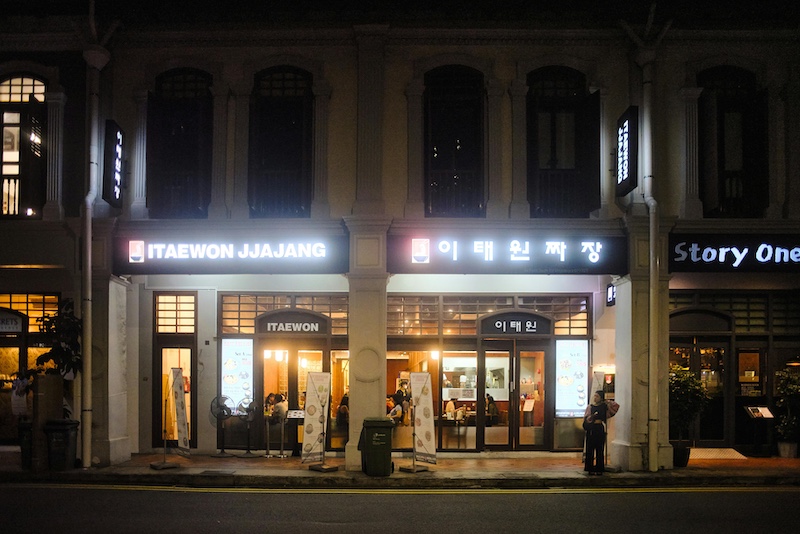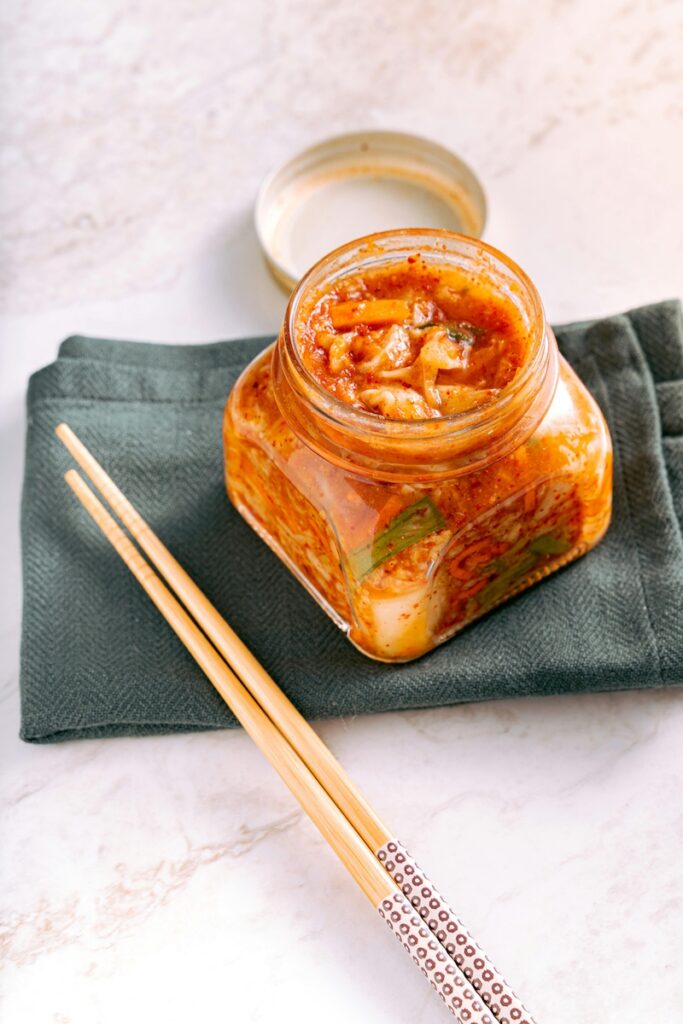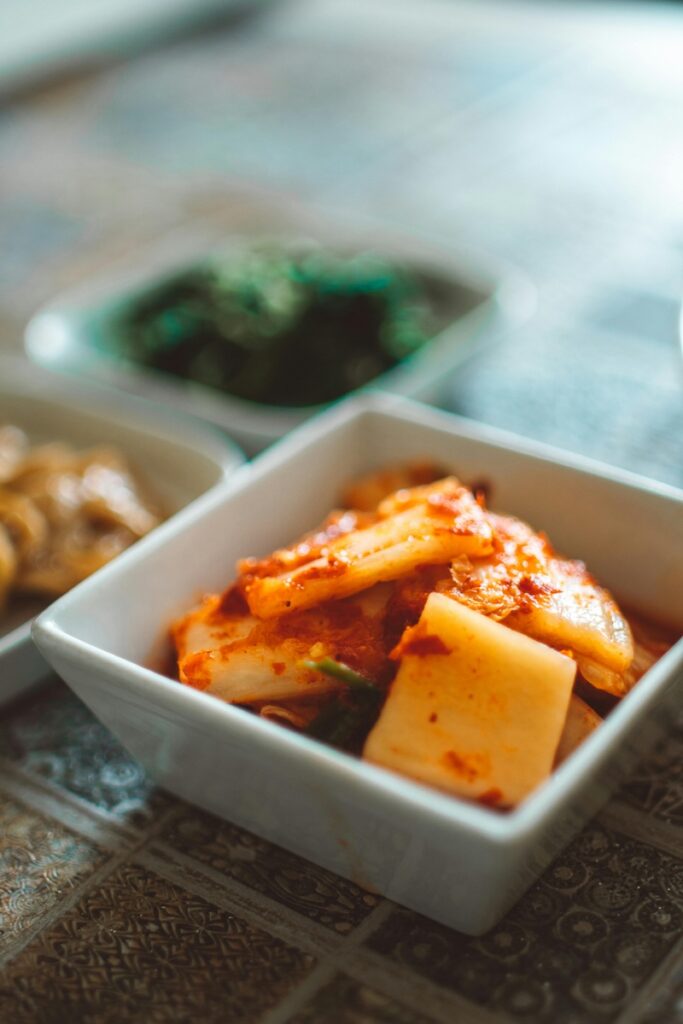If you’ve ever watched a Korean drama or movie, you might have seen a scene where friends or families gather around steaming bowls of black noodles, laughing and sharing stories.
That dish is Jajangmyeon – Korea’s beloved black bean noodles.
For many foreigners, the idea of black-colored noodles might feel unusual or even strange.
But one bite of Jajangmyeon, with its rich, savory flavor, will change your mind forever.
This is one of those “must-try in Korea” foods that goes beyond taste – it’s a cultural experience.
1. What is Jajangmyeon?
Jajangmyeon is a Korean-Chinese fusion dish made with chewy wheat noodles topped with a thick, glossy black sauce.
The sauce, called chunjang, is made from fermented black soybeans, diced pork (or sometimes seafood), and vegetables such as onions, zucchini, and cabbage.
- Color & Flavor: The deep black color comes from the fermented bean paste, but don’t worry – it’s not burnt or bitter. Instead, it’s slightly sweet, savory, and umami-rich.
- Texture: The sauce is thick and coats every strand of noodle perfectly, making every bite comforting and satisfying.
2. The Cultural Significance of Jajangmyeon
In Korea, Jajangmyeon is not just food – it’s a part of modern Korean culture.
- Moving Day Tradition: Many Korean families eat Jajangmyeon when they move into a new house. It’s quick, affordable, and easy to share.
- Singles’ Day (Black Day, April 14): On this day, single people gather to eat Jajangmyeon together, often as a light-hearted celebration of being single.
- Pop Culture Icon: Countless K-dramas feature Jajangmyeon delivery scenes, where the noodles arrive in stainless steel bowls covered with plastic wrap, ready to be mixed.
For foreigners, ordering Jajangmyeon is also a fun introduction to Korea’s legendary food delivery culture.

3. Variations of Jajangmyeon
Jajangmyeon has evolved into many variations to suit different tastes:
- Gan Jajangmyeon (간짜장면) – The sauce is stir-fried and served separately, giving it a stronger, smokier flavor.
- Jjajangbap (짜장밥) – Instead of noodles, the black bean sauce is poured over steamed rice.
- Jaengban Jajang (쟁반짜장) – A large platter of Jajangmyeon meant for sharing, often spicier than the standard version.
- Seafood Jajangmyeon – Loaded with squid, shrimp, or mussels for extra flavor.
4. Side Dishes That Make It Perfect
A true Jajangmyeon experience is never complete without its essential side dishes:
- Danmuji (단무지 – Yellow Pickled Radish): The tangy crunch of danmuji cuts through the richness of the sauce.
- Raw Onion with Black Bean Paste: Dip fresh onion slices into extra chunjang for a sharp, satisfying bite.
- Chili Powder (고춧가루): Sprinkle a little for a spicy kick.
These small accompaniments create a balance of sweet, salty, tangy, and spicy in every meal.
5. The Nutrition Side – Is Jajangmyeon Healthy?
While Jajangmyeon is indulgent comfort food, it does have some nutritional aspects worth noting:
- Carbohydrates: Wheat noodles provide energy but can be high in calories.
- Protein: Pork, seafood, or tofu (in vegetarian versions) add protein content.
- Vegetables: Onions, zucchini, and cabbage add vitamins and fiber.
- Sodium: Like many savory dishes, Jajangmyeon can be high in salt, so it’s best enjoyed in moderation.
For a slightly healthier version, some restaurants offer whole wheat noodles or extra vegetables upon request.
6. Where to Try Jajangmyeon in Korea
You can find Jajangmyeon almost anywhere in Korea – from small family-run Chinese restaurants (junguk yori) to major delivery chains.
- In Seoul: Areas like Incheon’s Chinatown are famous for their original-style Jajangmyeon.
- Delivery: Simply call or use a delivery app like Baemin or Yogiyo, and your noodles will arrive hot and fresh.
- At Markets: Some traditional markets serve Jajangmyeon alongside other street foods.
7. Celebrities and Jajangmyeon
Foreign celebrities visiting Korea often try Jajangmyeon on variety shows. Many are surprised by the sweetness of the sauce and the huge portions. Videos of foreigners trying Jajangmyeon for the first time often go viral on YouTube, making it an international curiosity.
8. How to Eat Jajangmyeon Like a Local
- Mix the sauce thoroughly with the noodles before your first bite.
- Take alternating bites of noodles and danmuji.
- If you like spice, add a pinch of chili powder.
- Don’t be afraid to slurp – in Korea, it’s a sign you’re enjoying your food.
Why Jajangmyeon is a Must-Try for Foreign Visitors
Jajangmyeon is more than just a bowl of noodles – it’s a story of cultural fusion, community, and comfort. From its Chinese roots to its place in modern Korean life, it’s a dish that connects people.
Whether you’re in a bustling Seoul neighborhood or a small Korean town, a plate of black bean noodles will always make you feel welcome.
So next time you’re in Korea, don’t just watch it in a K-drama – order it, mix it, and taste the real thing.

